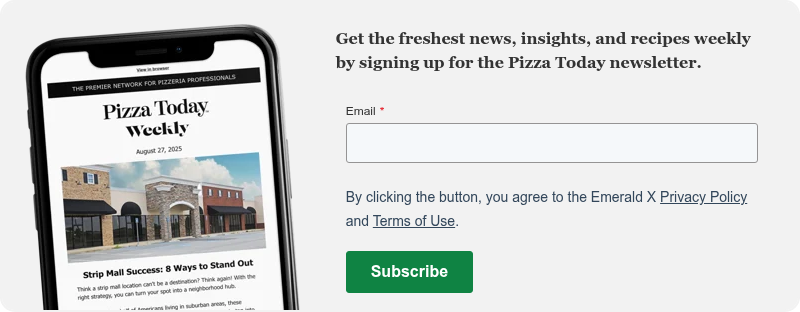Build SOPs that stick with clear, specific and repeated training
Every restaurant has its own way of doing things. But not every restaurant has a system that ensures those things get done the right way, every time, by every person. That’s the difference between “we’ve always done it this way” and an actual self-operating restaurant.
Most operators think they have standard operating procedures (SOPs). What they really have is a vague mix of verbal instructions, memory and hope. None of that holds up when you’re busy, when you grow, or when you’re not physically in the building.
SOPs only work if they’re clear, reinforced and treated like the backbone of your operations. They have to move from being a forgotten document to becoming the thing we can’t fathom not using.
The problem isn’t just creating SOPs, it’s building SOPs your team actually uses. That means developing them, reinforcing them, repeating them until they become habit and managing them as a system. If your team doesn’t adhere to SOPs when you aren’t around, they are not SOPs. They’re just your routine.
Why SOPs Matter
An SOP isn’t about being a lifeless corporate shill. It’s about clarity. Not having them does not mean you’re “keeping it real.”
When a task is completed three different ways depending on who’s working, that’s not versatility, it’s chaos. Chaos creates waste. Chaos creates bad service. Chaos keeps you stuck in the daily grind, constantly repeating yourself or fixing mistakes.
A good SOP stops that from happening. It sets the standard and removes interpretation. It’s the difference between “they should know better” and “they weren’t trained to standard.”
It also removes you from being the one responsible for every outcome. If your restaurant can’t run without you physically monitoring every task, then you don’t have a business, you have a very expensive and time-consuming hobby.
Why Most SOPs Fail
There are a few reasons most SOPs don’t stick:
1. They’re not specific.
Saying “prep the sauce” means nothing unless you define what ingredients, what ratios, what yield and what container it goes in. Vague SOPs are worse than none at all because they create false expectations.
2. They’re not accessible.
If your SOPs live in a desktop folder no one knows exists or a binder that’s collecting dust on a shelf, they’re not part of your daily operation. Your team needs access to the SOPs where the work happens: on the line, in the prep area, in the training process.
3. They’re not repeated.
One-time training is not training. If someone hears something once, they’ll forget it. The science is clear: It takes hearing something seven times before it starts to stick. And it takes 23 days of repetition to form a new habit. If your team hasn’t heard it seven times, and it hasn’t been reinforced for 23 days, don’t expect them to follow it. If you’ve said it 20 times, you are just three away.
4. They’re not tracked.
Most restaurants don’t keep an actual list of SOPs. That means you can’t see what’s built, what’s live, what’s missing and what needs work. If you don’t track it, you can’t manage it. And if you can’t manage it, it’s not a system.
How to Build SOPs That Stick
Start with one. Just one!
Pick a task that gets done inconsistently – maybe it’s how to close the dish pit, how to prep dough, how to count the safe, how to plate the Caesar. Write the steps out, step-by-step. Get as specific as possible. Use photos. Show the expected result. Do this in Google Sheets or Excel left in a cloud-based location, such as Google Drive. Also have it printed and laminated on the line.
Once it’s built, train it. But here’s the key: Don’t just train it once and move on. Repeat it seven times. That doesn’t mean seven hour-long meetings. It means bringing it up in daily huddles, calling it out during shifts, posting it in the right location and using real-time coaching to reinforce it. Each interaction counts.
Lean in on the training. Build a system around repetition, and emphasize that hearing it over and over again is not an insult to intelligence but reinforcement of proper behavior.
Keep reinforcing it for at least 23 days. That’s how long it takes to turn this into muscle memory for the team.
Manage the System, Not the People
Here’s the biggest shift you need to make as an owner or operator: Stop trying to manage each person. Manage the SOP system.
Create a single document or dashboard that tracks every SOP in your operation. It should show:
- The name of each SOP.
- The area it belongs to (prep, service, cleaning, cash handling, etc.).
- Who is responsible for training it.
- When it was last reinforced.
- What version is live.
- A master guide for you as an owner of the status of each SOP that you talk about with managers weekly.
This becomes your scoreboard. If something’s not working, check the system. Is the SOP clear? Has the team been trained on it? Is it visible? Has it been reinforced long enough?
When a team member messes up, go back to the SOP. If it’s there, trained and reinforced, you hold them accountable. If not, that’s on you.
That’s how you stop being reactive. That’s how you stop fighting fire with fire, instead using water, because that’s how fire works.
Make It a Culture, Not a Document
Once an SOP is built and reinforced, it becomes part of your culture – but only if you keep it alive.
Here’s how you make that happen:
- Mount SOPs on the wall at the station where the task happens or linking a QR code to a video.
- Review SOPs in huddles once per week.
- Spot-check them regularly during shifts.
- Update SOPs when things change and retrain immediately.
- Involve your leads and managers in the process so it’s not all on you.
Make following SOPs a baseline expectation, not a suggestion. The more they’re used, the more consistent your product becomes. That means fewer mistakes, better service, easier onboarding and a smoother operation.
This Is How You Scale
You can’t scale chaos. You can’t delegate ambiguity. You can’t hire people to read your mind.
You need systems: SOPs that are visible, repeatable and reinforced until they become second nature.
This isn’t something you fix overnight, but it is something you can fix starting
today. Start with one SOP. Make it airtight. Repeat it seven times. Reinforce it for 23 days. Track it. Then, move on to the next.
The more SOPs you build, the less you have to do, the better your team performs and the more you can actually own your restaurant on your own terms.
That’s the goal. Build the system, manage the system, scale, repeat.
Mike Bausch is the owner of Andolini’s Pizzeria in Tulsa, Oklahoma. Instagram: @mikeybausch
 Read the November 2025 Issue of Pizza Today Magazine
Read the November 2025 Issue of Pizza Today Magazine
This month, we are diving deep on all things cheese. Learn how the fluctuating commodities market can impact the price you pay for mozzarella and other block cheeses. Then, find out how operators are using craft beer cheddar, gorgonzola and plant-based cheeses made from cashews, coconuts, peas and other bases to create pizzas that are visually and gastronomically stunning. Round out your education for the month by brushing up on pizzeria art, SOPs and winter squash.
Check out the full Digital Edition – Pizza Today November 2025.



